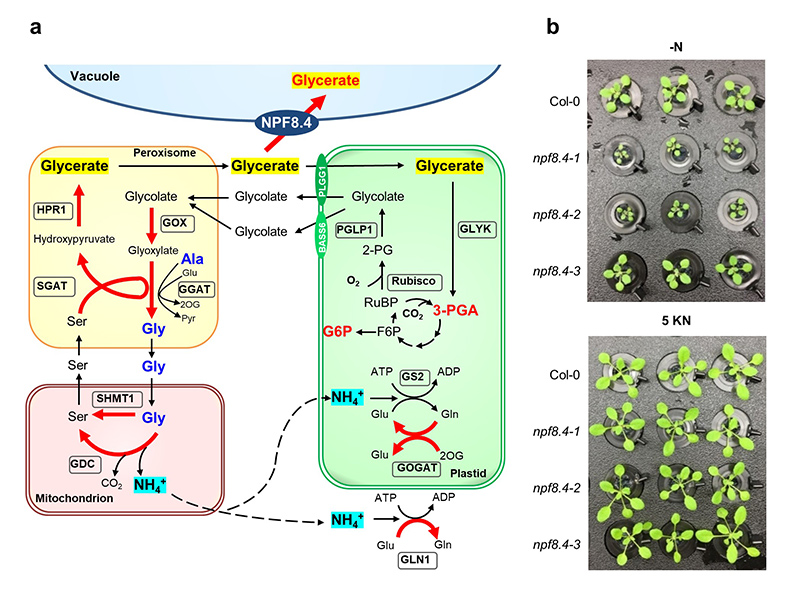Study of vacuole glycerate transporter NPF8.4 reveals a new role of photorespiration in C/N balance
Dr. Tsay, Yi-Fang - April, 2023
The photorespiratory intermediate glycerate is known to be shuttled between the peroxisome and chloroplast. Here, localization of NPF8.4 in the tonoplast, together with the reduced vacuolar glycerate content displayed by an npf8.4 mutant and the glycerate efflux activity detected in an oocyte expression system, identifies NPF8.4 as a tonoplast glycerate influx transporter. Our study shows that expression of NPF8.4 and most photorespiration-associated genes, as well as the photorespiration rate, is upregulated in response to short-term nitrogen (N) depletion. We report growth retardation and early senescence phenotypes for npf8.4 mutants specifically upon N depletion, suggesting that the NPF8.4-mediated regulatory pathway for sequestering the photorespiratory carbon intermediate glycerate in vacuoles is important to alleviate the impact of an increased C/N ratio under N deficiency. Thus, our study of NPF8.4 reveals a novel role for photorespiration in N flux to cope with short-term N depletion.
